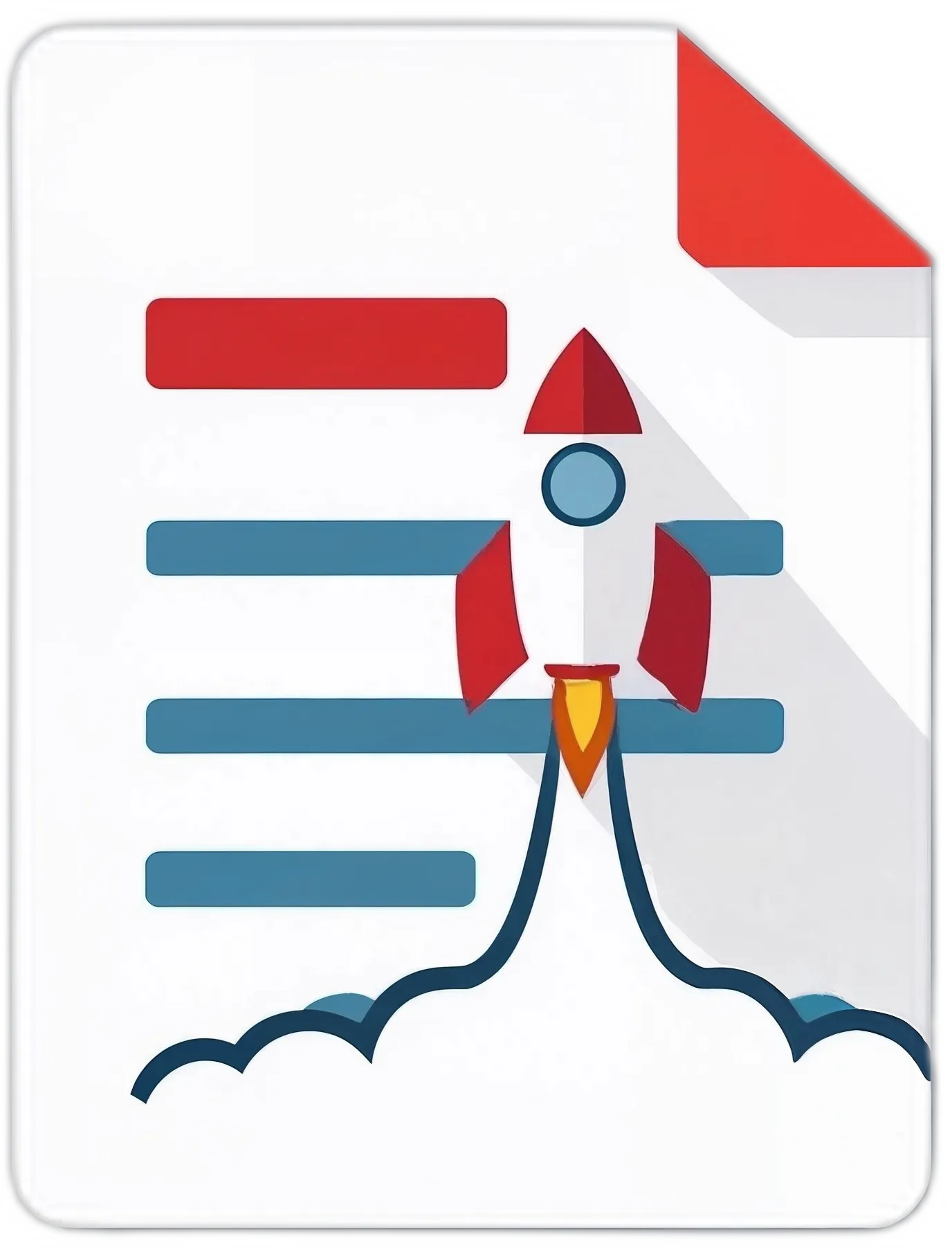The Ultimate Guide to Job Application Follow-Ups

You've taken the plunge. You've polished your resume until it gleams, crafted a standout cover letter, navigated the online application process, and hit "submit." Now comes the tough part: waiting. In a competitive job landscape where a single opening can attract a flood of applicants, simply submitting your materials and hoping for a response often means getting lost in the shuffle. The silence that follows can feel heavy, stirring doubt and impatience. But what if you could take control, increase your visibility, and showcase your genuine interest? That's where the skill of the job application follow-up shines-a cornerstone of this job application follow-up guide.
Many job seekers hesitate, fearing they'll seem pushy or desperate. They worry about bothering busy recruiters or crossing some unwritten line. Let's dispel that myth: a well-timed, professional, and personalized follow-up email after applying isn't an irritation-it's a sign of initiative, enthusiasm, and strong communication abilities, qualities employers consistently value. It elevates you from a name in a database to an active candidate invested in the opportunity. Following up keeps your application on the radar, can bypass glitches in Applicant Tracking Systems (ATS) or human oversight, and mentally reinforces your commitment to that specific role and company.
This ultimate job application follow-up guide equips you with the knowledge and best follow-up strategies to master this process. We'll explore ideal timing, review the most effective outreach methods, provide templates and examples for crafting compelling messages, highlight pitfalls to avoid, emphasize the impact of personalization, navigate the essential post-interview follow-up, discuss when to step back gracefully, and touch on leveraging tools to stay organized. By the end, you'll see that following up isn't just a smart move-it's a vital element of a successful job search strategy, timeless and adaptable to any era.
Timing Is Key: Nailing Your Follow-Up Rhythm
Deciding when to send a follow-up email after applying can feel daunting. Contact too soon, and you might appear impatient; wait too long, and your effort loses punch, possibly suggesting disinterest. It's a delicate balance, but one rooted in professional norms and strategic thinking.
- General Guidelines: Quick Confirmation (Optional but Wise): Within 48-72 hours of submitting your application, consider a brief email. This isn't a deep status probe but a way to confirm receipt (if no automated reply arrived) and restate your excitement concisely. Keep it short.
- First Real Follow-Up: Unless the job posting specifies a timeline, the consensus is to wait one to two weeks after applying before your first substantive follow-up. This window gives hiring teams time to process initial screenings via ATS or human review, acknowledging their multiple responsibilities. Reaching out earlier often interrupts their workflow.
- Subsequent Follow-Ups: No response to your first message? Wait about one week before trying again. Generally, limit follow-ups to two or three meaningful attempts spread over several weeks. Persistence is valuable; pestering isn't.
- Situation-Specific Timing: Referral Applications: If a colleague or connection submitted your application, you might follow up slightly sooner-say, 5-7 business days. The referral adds a personal touch, and a timely follow-up builds on it. You could even check with your contact first.
- Post-Networking Event: Met a recruiter or manager at a career fair or event and applied soon after? Following up within 2-3 business days capitalizes on that recent interaction. Reference the encounter.
- ATS Confirmations: An automated "application received" email doesn't reset the clock. Stick to the 1-2 week wait for your main follow-up.
- Factors Shaping Timing: Company Size & Structure: Large organizations often have layered hiring processes and higher application volumes, so lean toward the two-week mark or slightly beyond. Smaller firms might move faster, but don't assume-stick to a one-week minimum unless directed otherwise.
- Industry Norms: Some sectors, like government or academia, move slowly due to formalities (e.g., credential checks), while others, like tech or seasonal roles, may act quicker. Research typical hiring paces in your field.
- Job Posting Clues: Pay attention! If it says "no calls" or "we'll contact candidates by [Date]", follow those instructions strictly. Disregarding them is a red flag. An "urgent hire" note might justify a one-week follow-up, but avoid jumping too early.
- Tracking Your Efforts: Managing multiple applications? Organization is essential. Use a spreadsheet, a task board, or a job search tool (more on this later) to record submission dates and set follow-up reminders, ensuring nothing slips through.
Navigating the Wait: Understanding Hiring Timelines & Managing Expectations
The gap between applying (or interviewing) and hearing back can test your patience. Knowing the typical-and often lengthy-hiring process can help you stay calm and realistic.
- Hiring Cycle Basics: Initial Review: This can span days to weeks, involving ATS scans and human screening.
- Interview Invites: If you clear the first hurdle, expect 1-3 weeks from submission for an interview call, though timing varies widely.
- Post-Interview Outcomes: After the final interview, companies usually take a few days to a couple of weeks to decide and notify candidates.
- Why the Holdup? Decoding Delays: It's rarely personal. Common reasons include:
- Application Volume: Recruiters sift through stacks of submissions per role.
- Multi-Step Reviews: Your materials may pass through HR, the hiring manager, and team members.
- Scheduling Snags: Aligning busy calendars for interviews takes time.
- Internal Candidates: An insider in the running can slow things down.
- Budget or Priority Shifts: Internal approvals or changes can pause hiring.
- Absences: Vacations or holidays might delay key decision-makers.
- Background Checks: These steps, especially later, extend timelines.
- Industry & Role Variations: Entry-level roles with many applicants might reject quickly but interview on average timelines. Senior positions often stretch longer. Government or academic hiring tends to lag behind corporate processes.
- Staying Grounded: Your well-being counts.
- Control What You Can: Focus on submitting strong applications and timely follow-ups. Their schedule is beyond your reach.
- Keep Applying: Don't halt your search for one dream job. Stay active with other applications and networking to maintain momentum.
- Balance Optimism & Realism: Hope for good news, but accept that delays happen, and silence doesn't always signal success.
- The Unofficial Cutoff: While not absolute, if 3-4 weeks pass since applying (with perhaps one follow-up) and you hear nothing, they've likely moved on. Post-final-interview, 1-2 weeks beyond a stated timeline without word suggests fading odds. Shift your focus accordingly.
Choosing Your Method: Effective Follow-Up Channels
How you follow up can influence its impact. Aligning your approach with the context, company culture, and professional standards is critical.
- Email (The Go-To Option):Why It Works: Recruiters prefer it. It's flexible (they reply when free), professional, documented, and lets you craft a thoughtful note.
- Best Practices: Subject Line: Clear and filter-friendly. E.g., "Follow-Up - [Your Name] - [Job Title]" or "Checking In: [Job Title] Application - [Your Name]".
- Professional Address: Use a simple format (e.g., [email protected]).
- Brevity: Respect their time-keep it succinct.
- Proofreading: Errors undermine you instantly.
- Finding Contacts: Check the company site ('Contact' or 'Team' pages) or LinkedIn. Tools like Hunter.io can help (use ethically; verify addresses). If unsure, a polite HR inbox query beats guessing.
- Phone Calls (Use Sparingly):Pros: Direct, personal; conveys enthusiasm; might get instant feedback.
- Cons: Can disrupt a busy day; catches people unprepared; lacks a record; feels pushy if mishandled.
- When It's Okay: Small companies with open access.
- Sales roles where phone skills matter.
- After email rapport, if invited.
- If the posting requests calls (rare).
- Tips: Wait a week after the initial 1-2 weeks. Avoid Monday mornings or late Fridays. Prep a short script. State your name, role, and purpose clearly. Be ready for voicemail. Sample Voicemail: "Hi [Mr./Ms. Last Name], this is [Your Name]. I'm following up on my [Job Title] application from [Date]. I'm still excited about it. My number's [Your Number]. Thanks!"
- LinkedIn (The Networking Boost):Pros: Leverages your professional network; may bypass full inboxes; connects directly to recruiters; shows digital savvy.
- How: Connection Request: Send a personalized note mentioning your application and interest. Avoid the default.
- InMail: For Premium users or open profiles, a concise message works.
- Engagement: Comment or like their posts thoughtfully before messaging to raise your profile.
- Tips: Keep it professional, short. Link to the job. Customize-don't reuse your email.
- In-Person (Rarely Advised):Why It's Risky: In most settings, it's intrusive, ignores security, and seems aggressive.
- Exceptions: Perhaps a small local business where walk-ins are standard. Even then, tread lightly. For most roles, avoid it.
- Other Channels (Use Cautiously):Connections: A trusted company contact might inquire gently on your behalf. Don't pressure them.
- Social Media: Not ideal for direct follow-ups unless the company uses it for hiring.
Crafting Standout Messages: Content, Templates & Examples
The content of your follow-up determines its success. Aim for clarity, conciseness, courtesy, customization, and confidence (not arrogance).
- Core Elements: Subject Line (Email): Easy to spot. E.g., "Follow-Up: [Job Title] Application - [Your Name]".
- Greeting: Use their name (Mr./Ms./Mx. Last Name). Unknown? "Dear Hiring Manager" is fine.
- Context: Mention the job title and approximate submission date.
- Enthusiasm: Briefly affirm your strong interest in this role and this company.
- Value: Don't just express interest-show why they should notice you. Tie 1-2 skills or experiences to the job's needs. E.g., "My project management experience aligns with your need to bridge sales and marketing".
- Inquiry: Politely ask about status or timeline. E.g., "Could you share an update on next steps?"
- Offer: Note your readiness to provide more info.
- Closing: "Sincerely" or "Best regards".
- Contact Info: Full name, phone, email, LinkedIn in your signature.
- Tone Alignment: Study the company's style (website, posts, job ad). A startup might welcome a casual edge; a formal firm prefers polish. When in doubt, stay professional.
- Templates (Adapt!): Initial Follow-Up Email (1-2 Weeks Post-Application): Subject: Follow-Up - [Your Name] - [Job Title] Application
- Dear [Mr./Ms./Mx. Last Name or Hiring Manager],
- I hope you're well.
- I'm following up on my [Job Title] application, submitted around [Date]. I'm eager to contribute to [Company Name].
- My background in [1-2 skills], notably [specific example], fits this role's needs.
- Might you have an update on the hiring timeline?
- Thanks for your time. I'm happy to discuss further.
- Sincerely,
- [Your Full Name]
- [Phone] | [Email] | [LinkedIn]
- Second Follow-Up (1 Week After First, No Reply): Subject: Checking In Again - [Your Name] - [Job Title]
- Dear [Mr./Ms./Mx. Last Name],
- Hope your week's going well.
- A quick check on my [Job Title] application. I know you're busy, but I'm still excited about [Company Name].
- I'm drawn to [specific company feature] and believe my [skill] could add value.
- Any timeline insight would be great.
- Best regards,
- [Your Full Name]
- [Contact Info]
- Post-Interview Thank-You (Within 24 Hours): Subject: Thank You - [Job Title] Interview - [Your Name]
- Dear [Interviewer Name],
- Thank you for discussing the [Job Title] role at [Company Name] with me today/yesterday. I enjoyed learning about [specific topic].
- It deepened my interest, and I'm confident my [skill] suits your needs.
- Let me know if you need more details. Excited for next steps.
- Sincerely,
- [Your Full Name]
- [Contact Info]
Dodging Mistakes: Common Follow-Up Errors & Solutions
Follow-ups can lift you up, but missteps can sink you. Avoid these:
- Overeagerness (Too Soon/Often): Daily checks or pre-timeline nudges signal desperation. Solution: Stick to 1-2 weeks initial, 1 week later.
- Sloppiness: Typos or grammar issues scream carelessness. Solution: Proofread with tools and aloud.
- Generic Notes: Mass-sent messages lack soul. Solution: Customize with role/company details.
- Excessive Follow-Ups: Five-plus attempts after silence is overkill. Solution: Limit to 2-3, then stop.
- Forgetting to Follow Up: No outreach lets you fade. Solution: Set reminders.
- Pushiness: Demanding answers alienates. Solution: Ask politely, stay courteous.
- No Prep: Wrong contact or vague content looks lazy. Solution: Research the right person, tailor your message.
Personalization's Edge: Making Your Follow-Up Memorable
Generic follow-ups blend into the background. Tailoring them-part of the best follow-up strategies-shows effort and care.
- Why Generic Fails: It hints at mass applications, lacking a reason to stand out.
- Research First: Before writing:
- Company Site: Explore ‘About,' ‘News,' ‘Careers' for tone and priorities.
- LinkedIn: Check updates, profiles of key contacts.
- News: Search recent company highlights.
- Job Ad: Revisit for key requirements.
- Examples: "I'm inspired by [Company Name]'s focus on [value], aligning with my [experience]."
- "Your recent [project] impressed me-my [skill] could support it."
Post-Interview Excellence: Locking In Your Impression
Follow-ups don't stop at the application-they're crucial after interviews to show gratitude and fit.
- Why It's Essential: Skipping a thank-you seems ungrateful.
- Immediate Thank-You (Within 24 Hours):Email's standard; handwritten notes suit traditional roles if mailed fast.
- Thank them, reference a discussion point, reaffirm interest and value.
- Follow-Up Check-In: If a timeline lapses, gently inquire (adapt Template 2).
Knowing When to Pause: Exiting with Class
Persistence helps, but pushing too far harms your image.
- Stop Signs: Rejection, "no further contact" requests, or silence after 2-3 tries over weeks.
- Graceful Exit: Post-rejection, thank them briefly, note future interest if true, then move on.
Tools for Smarter Follow-Ups
- Tracking: Spreadsheets or apps like CVRocket.app log dates.
- Email Scheduling: Time sends for business hours.
- Grammar Aids: Tools like Grammarly refine your message.
Conclusion: Elevate Your Search with Strategic Follow-Ups
This job application follow-up guide proves following up is a game-changer. It's your chance to rise above, show dedication, and secure that role. Master these best follow-up strategies to turn silence into opportunity-timeless advice for any job hunt.





